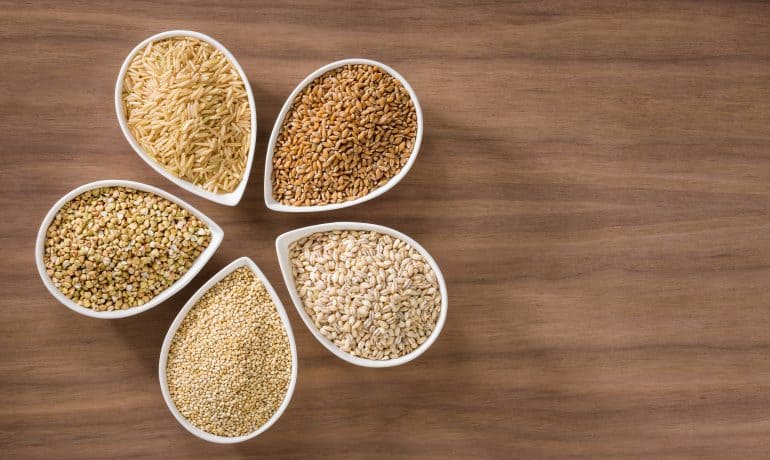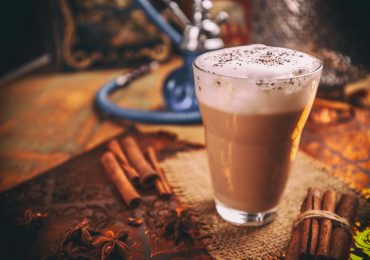Wild rice and brown rice are considered a top tier grain that is very popular for health and dietary reasons. Brown and wild rice are beneficial for weight loss and are packed with nutrients like iron, vitamins, iron, zinc, manganese, and potassium.
Now there is a new kid on the block – quinoa. White rice has had its germ cell removed and consists of bran and husk. The brown rice has its husk removed, but it’s still loaded with fiber, germ, and healthy nutritional values.
Wild rice like quinoa is more of a seed than a grain, but it is more popularly called rice. It is also high in natural nutrients.
Quinoa (keen-wah) is actually a seed which is from the goosefoot plant found mainly in South America and is more popularly called a grain. The nutrient value of quinoa is very similar to other grains like barley, wheat, and rice, but it is higher in nutritional value.
More people of all ages are including quinoa in their daily dietary regiments including its popular use in salad recipes, stir-fry dishes, and as a pilaf which normally calls for rice. It can be eaten as a breakfast cereal in flake form and has many more dietary uses.
You can cook quinoa just like you would rice. Just cook it in water or a broth, allow it to simmer, stir it quickly, and it is done. Any recipe calling for rice can be substituted with the delicious taste of quinoa.
Past and Present Usage
Quinoa has its roots in the high mountains of Bolivia and Peru with a history that stems back thousands of years. The citizens of South America call this seed ‘mother’ because it is viewed as the only food that heals, is reverently admired, and grows abundantly.
Quinoa is called a grain because it grows like a grain, it is digested like grain and it can be made into a cooking flour and flakes for easier consumption. It is enjoyed presently in bread, pasta, and breakfast snacks.
Quinoa is light to eat and when cooked gives a palatable and digestible nutty flavoring. It is now a global dietary food product with many health benefits.
It is considered by NASA, Oprah, the UN, and other world health agencies, as a food product that can feed the poor nutritionally for years.
Varieties
Quinoa is available in 4 common colorful seeds: red, black, white, and multicolor. Each colorful quinoa grain has its own nutrient value and taste, but only slightly:
• White: the more widely used quinoa grain which can be found on many store shelves. Similar in taste to red quinoa.
• Red: has more vitamin E than white quinoa. the red grain is a complete protein with all 9 essential amino acids and has a nutty flavor.
• Black: has twice more vitamins than red and white quinoa. It is slightly sweeter than the other varieties. Contains the same amount of nutrients as the other quinoa grains.
• Multicolor: a mixed combination with a nut-like taste. Can be eaten in a variety of dishes.
Is Quinoa Better For You Than Rice?
Organic Enrichment
Rice has nearly as much nutrients in its use as quinoa, however quinoa is heads above in nutrients found in rice. Additional benefits that quinoa has over rice includes some of the following:
a. Protein
• Quinoa: provides the key amino acids that the human body does not naturally produce but which is needed and is only available through what we eat.
• Rice: rice is an incomplete protein which means that it does not contain any amino acids.
b. Fiber
• Quinoa: very high in fiber, more than even brown rice.
• Rice: brown, white, or wild rice is less in fiber than quinoa
c. Carbs
• Quinoa: is lower on the glycemic indicia than any rice cultivars.
• Rice: Rice is mainly in the form of starch and is high in carbs.
d. Filling
• Quinoa: quinoa is highly enriched in fiber and protein. This means that its contents help to make you feel fuller so that you won’t gauge yourself when dining on it.
• Rice: white rice is an Asian staple because it lasts longer in storage. Brown rice is a filling food product also.
Known as the miracle crop or the mother grain, quinoa is a farmed crop which is supported by the Food and Agriculture Organization of the UN. The UN named quinoa has a food that in its natural state can be used to feed generations presently and in the future.
Conclusion
Peru and Bolivia are the chief growing areas for quinoa, with Colombia, Ecuador, and Argentina in close contention. Farmers in the US Pacific Northwest and Canada are trying to grow quinoa. That’s because these locations come close to the growing environment needed by quinoa. High range areas in Africa, Europe, and Asia are also experimenting in trying to grow this crop which through its amazing organic nutritional value, it can feed the underprivileged around the world at no cost.


